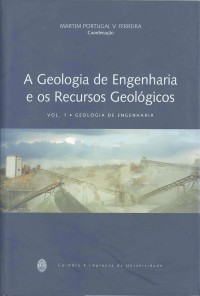Please use this identifier to cite or link to this item:
https://hdl.handle.net/10316.2/39149| Title: | Aplicação do modelo hiperbólico no comportamento mecânico de um solo residual granítico | Other Titles: | The hyperbolic modelling applied to the mechanical behaviour of a residual granitic soil | Authors: | Pais, Luís José Andrade | Keywords: | residual soil;bonding;hyperbolic model;solo residual;estruturação;modelo hiperbólico | Issue Date: | 2003 | Publisher: | Imprensa da Universidade de Coimbra | Journal: | http://hdl.handle.net/10316.2/2826 | Abstract: | It is attempted to apply the hyperbolic model to the mechanical behaviour of a residual granitic soil, despite its heterogeneity, using a mathematical formulation with the support of statistical methods. Considering that the soil is a continuous body, adequate methods are used for the analysis of the distortion with its induced significant volumetric counterpart. It is considered necessary to have a system for the analysis of the behaviour of the soil from the beginning of the loading to the rupture assuming that the elasto-plastic behaviour of the soil is complex.
The hyperbolic law is used through adjustments of the deformations introducing corrective parameters to the theoretical stress-strain curve forcing the approximation of the theoretical and experimental curves. The convergence is forced in singular points of the experimental curve, with the combination of rigidity values in several deformation stages (Jardine et al.; Shibuya et al, 1991) as mentioned by Viana da Fonseca (1988). The hyperbolic modelling allows to reproduce the values of the modules of the initial deformability tangent in a consistent way, under the conditions of K0<1. It is reported that this adjustments are more difficult if the sample keeps being structured. Tenta-se aplicar o modelo de comportamento hiperbólico à deformação experimental de um solo residual por formulação matemática, mesmo considerando a forte heterogeneidade nas suas propriedades, com a aproximação através de métodos estatísticos. Tendo por base que o solo é um corpo contínuo e adoptando métodos próprios para a análise das distorções influenciadas por deformações volumétricas, torna-se necessário ter um sistema para a análise do comportamento do solo desde o início do carregamento até à rotura, assumindo que o comportamento plástico dos solos é muito complicado. Adopta-se a lei hiperbólica, por meio de ajustamentos da escala das deformações à curva de tensão-deformação teórica, por via de formulações empíricas alternativas e através de parâmetros correctivos; a convergência é forçada em pontos singulares da curva experimental, com a combinação de valores de rigidez em vários estágios de deformação (Jardine et al.; Shibuya et al, 1991) citados por Viana da Fonseca (1988). A modelação hiperbólica permite reproduzir os valores dos módulos de deformabilidade tangente inicial, de modo consistente em condições K0<1, mas assume dificuldades de ajustamento à curva experimental quando o provete conserva alguma estruturação. |
URI: | https://hdl.handle.net/10316.2/39149 | ISBN: | 972-8704-14-3 978-989-26-0321-6 (PDF) |
DOI: | 10.14195/978-989-26-0321-6_13 | Rights: | open access |
| Appears in Collections: | A geologia de engenharia e os recursos geológicos. Vol. I: Geologia de Engenharia |
Files in This Item:
| File | Description | Size | Format | |
|---|---|---|---|---|
| aplicacao_do_modelo_hiperbolico.pdf | 2.61 MB | Adobe PDF |  |
Items in DSpace are protected by copyright, with all rights reserved, unless otherwise indicated.
